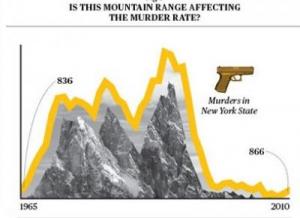On science blogs: Explosions
LINKS ON THE BOSTON MARATHON BOMBING AND THE TEXAS FERTILIZER PLANT EXPLOSION, MOSTLY ABOUT SCIENCE AND MEDICAL MATTERS. Geez, what do the Chechens have against us? Although if ever there were moving targets for journalists, it's these stories. Everything about them is provisional. Early reports on the Boston marathon bombing and the Texas fertilizer plant explosion are not just first drafts of history, they are tentative notes for the first drafts of the first drafts of history.
Among my notes, however, is the fact that there's far more being said about terrorism at the Boston marathon than there is about the massive explosion in Texas even though there were many more casualties in Texas and the cause is still mysterious. Despite more death and more maiming, the assumption that the Texas explosion was an accident, not yet confirmed as I write, makes it seem less important than terrorism. And it doesn't hurt that Boston is a media hub chock full of writers and West, Texas is not.
SciAm, for instance, has collected posts on the Boston bombing in a roundup. Topics include Larry Greenemeier's pieces on how terrorists use improvised explosive devices, IEDs, and also on the use of video analytics for crime solving. No roundup as I write on the Texas explosion, but there's a guest blog by Kyle Hill on analysis of clouds from explosions.
Paul Raeburn is writing updates on the Boston story at the Knight Science Journalism Tracker, which is based in Boston. Find posts on technical aspects of fertilizer explosions by Brad Plumer at Wonkblog and Geoffrey Mohan at the LA Times's Science Now.
As is usual with news events that are breaking and breaking and breaking, Twitter is a blessing and a curse. But tweets are now a standard form of newsgathering. Advice on how to deal with the uncertainties, and how not to be part of the problem, is to be had from Jeremy Stahl, who is in charge of Slate's Twitter feed. The post is about the marathon, but the advice applies widely, and he speaks in part from embarrassing personal experience. Possible mechanisms for tweet verification come from Mathew Ingram at PaidContent — and, in particular, the comments on his post. It's Not a Lecture's David Wescott maintains that Twitter can actually be a tool for getting it right, especially immediately after a new event.
MEDICINE SHINES AT THE BOSTON MARATHON BOMBING. None of the 117 wounded in Boston have died, and that's because of what we've learned since 9-11, including our wars in Iraq and Afghanistan. There's been stolid acceptance of what is needed medically, along with preparation for the worst, says Boston doc Atul Gawande in his piece about medical response to marathon injuries in the New Yorker.
We’ve learned, and we’ve absorbed. This is not cause for either celebration or satisfaction. That we have come to this state of existence is a great sadness. But it is our great fortune.
Tourniquets were an instant tool for managing wounds on site at the marathon, but a few years ago, they probably wouldn't have been, according to Mike Stobbe at HuffPo. They date back to at least the Roman Empire, but were out of favor in recent decades because they can be tricky to use correctly. Their good record in the Iraq war has led to a revival. Tourniquets are not yet back in universal favor, but are standard equipment in Boston EMS. Which — given that Boston is a medical mecca second to no other — is the best possible vote of confidence.
Maia Szalavitz's Time post describes how terror hijacks the brain, turning off the rational mind in favor of emotional impulse.
Scicurious is a distance runner, although not competing in this marathon. In a post at the Scicurious Brain, she explains why marathon runners often suffer from hypothermia, and why hypothermia was a particular problem for those still running when the bombs went off. They were stopped suddenly — imagine how particularly horrible to be prevented from completing this supreme feat of endurance just short of the finish line — but there were no silver blankets to keep in their heat, and they were sweating and hypoglycemic and dehydrated and lacking in insulating body fat, and it was a chilly day in Boston.
POSTS ABOUT THE BOSTON MARATHON BOMBING WE COULD HAVE DONE WITHOUT. I found Paige Williams's post at the New Yorker, a leisurely interview about the bombing with forensic chemist and bomb expert Adam B. Hall, jarring in approach and in tone. It is a classic Talk of the Town piece, discursive and literally ambling, a peculiar choice for a matter so urgent. For one thing, it got in the way of the information Hall was trying to convey. Not a good way to go about an Explainer.
My candidate for the most bizarre commentary of the bombing is a post by Phrantceena Halres at Government Security News. She blames the bombing on marathon spectators, who should have been watching for terrorists instead of marathon runners. At first I thought the post might be an exceedingly lame attempt at a piece for the Onion. But given the venue — and the telling datum that Halres runs a company "focused exclusively on high threat/close proximity safety and security service" — I think she was serious. Now there's a woman who knows a marketing opportunity when she sees one.
THE U.S. SUPREME COURT AND PATENTING HUMAN GENES, WITH HELP FROM ERIC LANDER. It's been overshadowed by more immediately explosive events, but a hugely important genetics case was argued at the U.S. Supreme Court on Monday. Jake Sherkow provides an informative and (relatively) brief summary of the issues surrounding whether genes can be legally patented at Stanford Medicine's Scope. He also lays out the arguments on whether, as a matter of policy, gene patenting should be permitted — concluding with the intriguing observation that whatever the law and/or policy, researchers seem to be ignoring patents and going right ahead with their research.
On its face the case is about Myriad Genetics's patents on the human breast cancer genes BRCA1 and BRCA2, but there are ramifications galore. Get details from Eliot Marshall at ScienceInsider and/or from Nina Totenberg at Shots.
The tea-leaf readers observing the U.S. Supreme Court debate on Monday are not necessarily reliable guides to what the justices actually think and how they will rule. So this is another of this week's items that comes to you heavily salted. But the journalists' consensus seems to be that the Supremes are not enthusiastic about patenting human genes. Kaiser Health News summarized the journalism on Tuesday. See also Marshall and Totenberg links above.
At the Great Beyond, Heidi Ledford adds an intriguing detail. The justices, she said, appeared to be particularly impressed by a friend-of-the-court brief from uber-geneticist Eric Lander. Lander pointed out that, contrary to Myriad's assertions that their patents on individual genes are kosher because individual genes don't exist in nature, free-floating genes are a natural phenomenon. In fact, according to Lander, both BRCA1 and BRCA2 have been found in fetal cells from maternal circulation.
ELEMENTARY MISUSE OF SPREADSHEET DATA LEAVES MILLIONS UNEMPLOYED. Discovery of fudge factors in the enormously influential economics paper by Carmen Reinhart and Kenneth Rogoff confronts us with the likelihood that much of the recent economic misery here and especially in Europe may be due in part to an Excel coding error. That's a bit of an exaggeration, but the paper also seems to have fallen victim to an error that science writers are thoroughly familiar with: assuming that a correlation between one thing and another means that thing 1 causes thing 2.
That, and the paper's other misstatements, have been disastrous in a way that far transcends the correlation/cause flubs we science writers make. The errors have encouraged economic austerity policies that have worsened and prolonged the recent financial crisis. The hed on this section, which I lifted from another blog, is not much of an exaggeration.
Noah Smith presents a quick explanation at Noahpinion.
[Reinhart and Rogoff] claim that after a country's debt hits 90% of GDP or more, [the country] grows much more slowly. [Thomas Herndon, Michael Ash and Robert Pollin] take RR's data and find that RR have done some dubious things with it, including A) randomly excluding countries from the sample, B) weighting outcomes by "growth period" instead of by year, and C) making an Excel error. The Excel error is not a big deal, just a "gotcha", but the other two things are pretty important, especially the weird weighting. When the data are weighted by year and the excluded countries are allowed back in the sample, HAP find that: 1) There is no "sudden deceleration" or "structural break" in growth when debt hits 90% of GDP, i.e. there is nothing special about 90% as RR often claim, and 2) Countries with more debt may tend to grow more slowly, but the effect is considerably smaller than RR claim, and not statistically significant.
Paul Krugman's exegesis is a bit longer but crystal clear and fun to read, of course. Adam Marcus adds a good many details at Retraction Watch, while acknowledging that the original paper has not been retracted. Yet.
Krugman and others suggest that this discovery will make no difference at all to national economic policy because policy has been based in ideology that is immune to facts and data — or promulgated by people who will never admit they were wrong.
Just as many have suspected, the dismal science is dismal all right. But it's not science.






